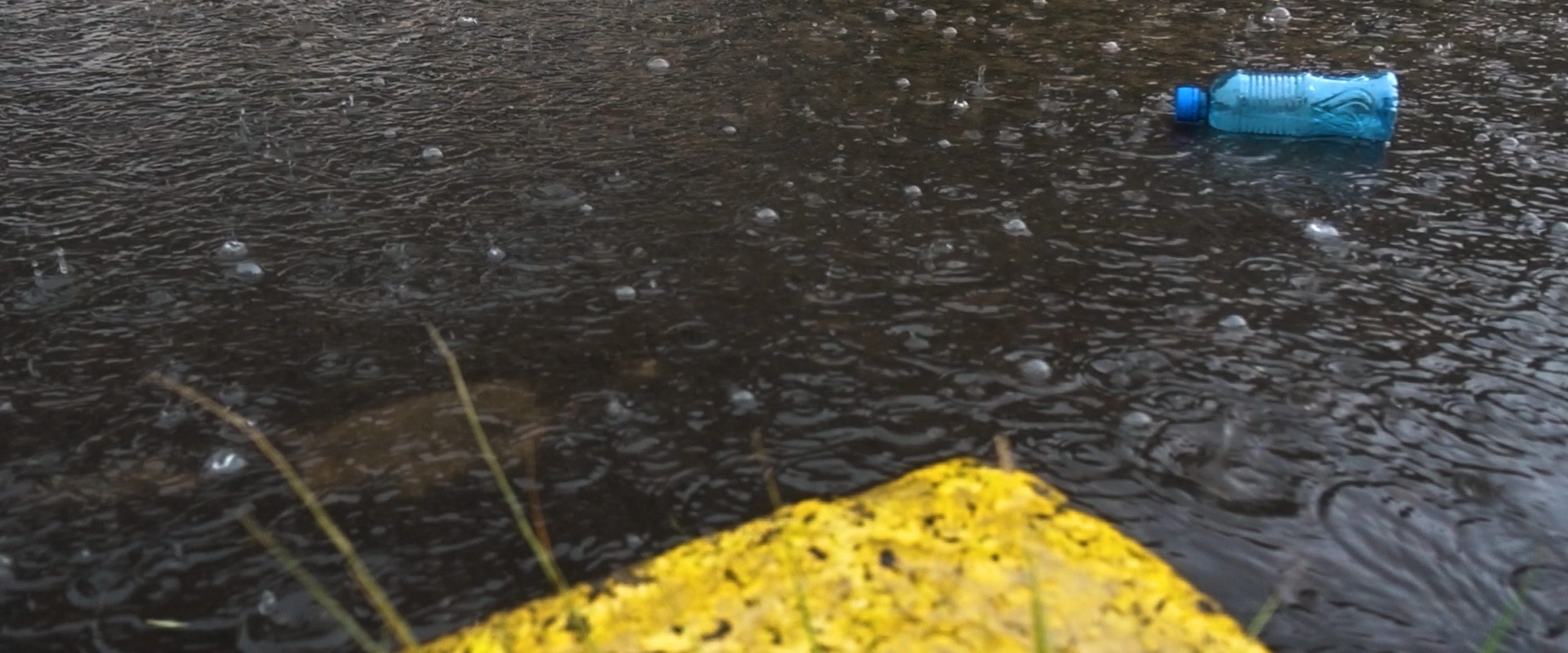When the Land Speaks is organized by the Eli and Edythe Broad Art Museum at Michigan State University and curated by Carla Acevedo-Yates and Steven L. Bridges, Associate Curators. Support for this exhibition is provided by the Alan and Rebecca Ross endowed exhibitions fund.
About the Exhibition
The Voice Adrift follows the path of a message in a bottle as it travels through the streets of Panama City. The message is invisible and almost inaudible, whispered into an empty plastic water bottle, which is then set adrift on the currents of runoff from a tropical downpour—at times gentle, at others volatile. The bottled message navigates shallow muddy stretches, concrete gutters, and storm drains, and encounters natural and plastic detritus as it makes its way toward an unknown person’s ear. Informed by the circular and episodic structure of Homer’s epic poem Odyssey, the video is both intimate and grand in its fleeting depictions of this urban aquascape. Plastic and its environmental impact are forefronted by the vessel containing the message, but The Voice Adrift also speaks to the frailty and resilience of human existence in the face of political, social, and environmental crisis. Although the narrative begins with a human voice, the original message becomes almost inconsequential as it is immersed in the language of the land—sounds of thunder clapping, rain falling, and water moving.
Donna Conlon (b. 1966, Atlanta) and Jonathan Harker (b. 1975, Quito, Ecuador) live and work in Panama City. The artists have collaborated since 2006, often using a playful approach to address serious environmental and sociopolitical themes through the medium of video.
When the Land Speaks
This program presents the work of artists who explore the land as a space of conflict, which speaks through a changing, often fractured landscape. Addressing current issues such as resource extraction, sustainability, land rights, and displacement and dispossession, the works in this video series approach language as a form that does not limit itself to verbal communication. Instead, enunciation takes place in and through the territory: in the sounds and forms that water takes, in the rumbles and cracks of the earth, and in the ancestral rituals and practices derived from the landscape. In many ways, land and language have always been interconnected, each helping to define the other. But in our present day, there is a growing disconnect between much of human society and any sense of rootedness or care for the land that supports us. Confronting these realities, the artists in this series draw attention to the power of the landscape to express itself and communicate with us and reflect on how our eroding connection to the land may also represent a fading understanding of ourselves.
